Bifurcation has come at great cost to the people of undivided Andhra, not only financially and culturally, but reputationally.
The TRS propaganda machine exacerbated divisions by sowing suspicion and mongering grievance. This created the requisite atmosphere of discord for splitting the state. In the process, however, the nation itself has now become familiar with some of these stereotypes and has not altogether rejected them. We have been in the news for all the wrong reasons. Damage has been done.
All this, of course, is in an environment where Delhiite variety ignorance already views Telugu speakers as cookie cutter Madrasis (a trope that our Tamilian brothers are only too happy to perpetuate with their frequent declaration of “South Indian” this and that). But the truth of the matter is, we must take our requisite share of blame, for despite being excellent businessmen, the people of Andhra have been terrible marketers.
First and foremost, we have repeatedly allowed outsiders to define us (and then separate us) first with the foreign-derived Telangana label, then with the Madrasi/Dravidian colonial line, and then the generic bollywood South Indian. While there is nothing wrong in being associated with the South, which, let’s face it, is undeniably the most cultured part of India; at the same time, 80 million people should be confident enough to assert their own identity and polish it—this is the importance of Push and Pull Marketing. Andhras have failed at both.
Push marketing is assertively ensuring that people understand your distinctiveness through identification and repetition. If your North Indian friends and acquaintances keep referring to you as South Indian, you must emphasize that you have your own identity and they should pay you the courtesy of being aware of it. After all, Bengalis don’t appreciate being referred to as North Indian–why should Andhras, with the reciprocal? Similarly, we don’t say “North Indian-Rajasthani” just “Rajasthani”. There’s something inherently disrespectful and step-brotherly about even the national press discussing cross-cultural marriages of Indians as “Gujarati and South Indian”. Arey baba, which state?…
Our Tamilian friends—God bless ’em— are masters at this. Through their impressive love of language and pride in culture, they have been able to overshadow our brand (in fact, until recently with “IT gulti” snipes, we didn’t have much of one) despite our outnumbering them by well over a crore (80 million to 65 million). While they have been very successful at promoting awareness, there is another angle. Our jokes about “Arama aaghaayathyam” aside (Tamil friends, please bear with me and keep reading; I will make up for this), it must be noted that their brand of marketing has had a negative side and fallout: Dravidian separatism and perception as irascible (for all our faults, we Andhras are not guilty of this). As such, pull marketing becomes equally if not more important to ensure positive brand imaging.
Pull marketing deals with attractiveness. In strategic terms, it is what international relations scholar Joseph Nye refers to as “Soft Power“. The culture itself, whether through language, art, dance, music, literature, geography, history or cuisine, must be magnetic enough to not only retain the loyalties and interest of its own ranks, it must be able to reach out and positively draw in interest from others. Thus, to have a strong brand, it is not enough to merely shove images in peoples face and gain impressions—the brand equity itself must also be seen as attractive, thereby preventing this from being strictly a game of numbers.
While Punjabis (Bhangra, Mattar Paneer, Maharaja Ranjit Singh) and Bengalis (Sweets, Swamis, Sell-outs…jk, about that last one my Bong brothers…) may have a global weight of well over 100 million each behind them, the comparatively smaller Rajasthanis (Forts, Royalty, Romance)and Gujaratis (Garba-raas, Business, Bright fashion…and now Leaders) have forged excellent brands that are genuinely attractive. In fact, as of this week, the latter are all set to take national center stage.
People enjoying #Bhangra at Kathmandu on the occasion of #baisakhi & Nepali New Year 2074. Event organised by Indian Embassy @IndiaInNepal pic.twitter.com/I2pC04bGy7
— DD News (@DDNewslive) April 12, 2017
The Punjabi case is particularly interesting because the younger generation was able to modernize what could have been seen as a rustic village dance and transformed it into avant garde dance music that not only appealed to other Indians, but even other civilizations.
Punjabi Sikh youth gave the whole world chart-topping music to dance to by reinvigorating it with popular hip hop music beats from America—and enhanced the then already robust Punjabi brand. This not only increased pride and reach, it also did something few cultures do—found a way to mine traditional cultural capital and release a version relevant and even popular in the modern context. After evaluating all these points, it becomes clear that the youth of these other Indic cultures are far more likely to take pride in who they are, and outsiders more willing to associate with the brand. Andhras must take note, and act accordingly.
To be fair, it hasn’t been all bad. Chandrababu Naidu single-handedly built not only the “Cyberabad” brand for Hyderabad, but also made Telugu near synonymous with techie. Our penchant for resume embellishment aside, the Telugu-speaking IT worker has almost become a cultural trope—though the Tamilians have managed to stake their claim here too (yet another reason to dislike SRK and Ra.One. How was his character not a Telugu speaker??!). Before the Telangana mess became all encompassing, even Sikh taxi drivers in the West drivers knew about that “Andhrawale Naidu” who put his state back on the economic map and on the road to the future. They even favorably mused on the merits of a CBN PM’ship.

But this is now all for naught, as Hyderabad is no longer the united capital of the Telugus; the Pune-wallahs, Chennai-ites, and of course the heavy weight champion Bangaloreans, have ensured there is no exclusivity to putting the Cyber in one’s city; and that “Andhra” is in fact now associated with settler/scamster courtesy of YSR and TRS trolls; one provided the proverbial molehills, the others made mountains out of them. And so, we cannot just sit on our hands. Ultimately, brand marketing deals with who and what we are and cuts to the core of our identity and the identity of future generations.
As such, it eminently clear that the people of Andhra (whether from Telangana or Seema) are due for a rebranding. The question is, how?
Rebranding: Do’s and Dont’s
To successfully rebrand a flagging identity, one must understand the do’s and don’ts. It also means understanding precisely what marketing in the internet age involves.
Branding requires not only content and advertising, but also research (into our past and present culture), design (how will this all be packaged), and strategy (what will we emphasize keeping in mind the actions of competitors).
As we move forward, here are some rules to keep in mind:
Rule #1: Always keep the Target Market in Mind
The single biggest mistake companies, whether in services or products, make is forgetting who their target market is. Simply put, if you don’t know where you are from and whom you serve, you don’t know where you are going and why they will buy.
Our target market is divided into the following segments:
1. Telugu Speakers:
While we can always subdivide this into Seemandhra/Telangana or Youth/Old, the reality is our brand must first be appealing to our own Telugu people.
This means being authentic and distinctive. The Andhra brand must not only purvey what is authentically our heritage, it must also show how we are different (from other Indians, especially South) in a positive fashion.
2. Indians
Thanks in part to the effective push marketing job of Tamilians, the Telugu/Andhra brand is either unknown or second-rate. Understanding how to be a distinct and attractive brand to other Indians is critical to making sure our youth feel their own culture is respected by others. Young people get validation from their peers. We must show them how our culture is valid, even in the modern context.
This means not trying to be a lamer version of somebody else. Rather than trying to just create the next Bhangra (probably not going to happen, fellas) or Chicken tikka, the approach should be, “yes they have that, but we have this“. It also means emphasizing your own brand when the consumer misunderstands or mis-brands you.
Most importantly, the Andhra brand will be appealing to this segment if we jettison our inverted mass culture influencing high culture approach and return to high culture serving as example to mass. If we focus on promoting the lifestyle of unschooled provincials and preposterous storylines in our movies—we will only be seen as such.
3. Global elites
Punjabi, Rajasthani, and Bengali are the most established brands in the eyes of global (especially youth) elites (although Gujarati is now about to have its day in the sun…). This is due to bhangra, food, upgraded travel destinations, and literature.
Thus, to establish a clear identity for the Andhra brand amid the clutter and cacophony of India, the state of Seemandhra must engage in dharmic tourist development, clean urban and rural living, and emphasize function AND form.
The last one matters a lot. It is not enough to just present something that’s yours—it has to be appealing. See the difference between this and this. There must also be a tangible effort by state leaders to keep the state out of the news for the wrong reasons. Last year’s horrific Nirbhaya crime stained India’s global brand like never before. Andhras must know how to play defense as well, and protect their brand—not only through good governance, but also through PR and brand management.
So while what we purvey and possess must be authentic and distinctive, it must also be presentable and well-presented. With all due respect to our Telangana brothers, Seemandhra will invariably become the authentic representative of united Andhra culture, unfettered by biryani baggage from Hyderabad and Northern involvement. Thus, it is incumbent upon the new Seemandhra state to turn this disaster into an opportunity. To do that, we must first understand our target market.
Rule #2: Do no harm
What is new is not always better. While it is important to update one’s culture and brand, it is also critical not to throw out the baby with the bath water.
A number of classic brands have made changes over there years, sometimes to adapt to changing circumstances. Sometimes classic logos are brought back to cater to nostalgia.

Other times, being seen as slick, fresh, and modern becomes more important. In fact, America, which effectively invented marketing as an independent branch of knowledge, has also historically been the world’s greatest marketer. In 2008, it arguably embarked on one of the greatest political rebrandings for a country.
Rather than going with the old, tried, and tested, they went with what was new and cool. Most importantly, they made it a point to not do harm to the existing brand of what America stood for post-Bush. Rather than go with Bush lite, it was a complete rebranding that presented a global image, while remaining authentically American.
Andhra’s challenge is to find a way to do the same, without doing harm.
Rule #3: Focus your Pitch
It is not enough to make sure you know to whom you are selling, but to make sure it is relevant to them and easily understood by them. And so, one of the primary principles of marketing is that branding takeaways should be simple, short, and strategic. Just as you can’t please everyone, you can’t be everything. Typically, the consumer should be able to carry away three things—and if you’re a competent marketer, they should be positive things.
Therefore, our redesign of the Andhra brand must be relevant to the times. It is not enough to merely replicate the past, we must understand the global cultural-context we are in. This means presenting one’s self as tolerant, respectful of women, dynamic, fashionable, and progressive—while staying true to our roots and culture. This means keeping the baby, but throwing out the bath water.
It means not only ensuring our laws are in harmony with these principles, but also that attitudes themselves should be reflective of this, and our people open to criticism. Thus, our people must not only know how to be brand ambassadors, they should be able to receive and digest feedback. To be fair, this last part is an All-India failing, but perhaps Andhra can be the first to turn this around.
There are of course, many more rules and factors one should consider, but these are the most important, and should cover the essentials in the short space available. Irrespective, while the government of the new state would be well-advised to retain the services of a marketing consultant, it is incumbent on all people of Andhra to do the hard work of first learning about their culture (past and present) and intelligently mining, packaging, and presenting it to our youth, our fellow Indians, and fellow global citizens.
Each one of us is a brand ambassador for Andhra.
Rebranding Andhra:
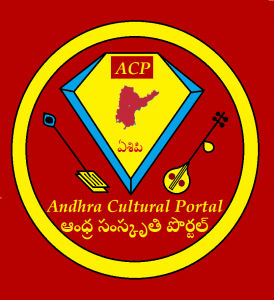
First, why do I insist on the “Andhra” label?
In the wake of bifurcation, our Telangana brothers (and even some in Seema) more than ever are insisting on Telugu rather than Andhra. But we must hold firm to the latter for many reasons. The most obvious basis is that the ancient name of our people and united region is in fact Andhra. Even the language was referred to as Andhram and the people Andhras (whether it was the Sons of Viswamitra ,the infamous Chanoora, or the glorious Satavahanas). This is also why my preference is to refer to “residuary Andhra Pradesh” as Seemandhra. It protects the all gulti-land applicability of Andhra, avoids calling it rump or residuary, and denotes the districts that it encompasses.
It also ensures that while TG may have broken off as a separate state, it must remain in the hearts and minds of all Telugu-speakers and Indians that Telangana is still a land of Telugus/Andhras. Some may be in favor of naming the coastal state “Telugu Nadu”, but this is also folly. For 1) it implies that Telangana isn’t Telugu (it most certainly is and will remain so) and 2) won’t help our existing”madrasi” branding issues due to the original TNadu next door. Reasserting the dignity of the name Andhra will restore pride in our people and their ancient heritage. It will also serve as warning to those with nefarious designs.
Let us also face it, much like Bengaluru, Telugu isn’t exactly a name that will strike fear in the hearts of our enemies or even give us international marketability. Our name for our undivided people and culture must itself command respect and be attractive to the foreign ear as well (i.e. Bangalore). Let us continue to refer to our beloved language as Telugu, but let us all (Telanganite or Seemandhraite) identify ourselves as Andhraites, Andhras, and sons/daughters of Andhra.
Naysayers may claim that it’s more convenient to make the regional culture synonymous with language (i.e. Bengal-Bengali, Gujarat-Gujarati, Odisha-Odia), but our friends from Kerala have managed to have their Keralite and Malayali too. There is no reason we cannot do the same.
Brand Equity
Next, we must identify, understand, and agree upon our brand equity. Brand equity is the sum total of the images, ideas, sounds, flavors, principles, and symbols with which the brand is associated. As stated above, these should be distinct (from competitors), authentic (does what it says), and attractive (should be appealing to our youth and outsiders).
When designing the logo for the Andhra Cultural Portal, this was the brand equity we wanted the site to communicate for Andhra.
1. Diamond of India
2. Sweet Language
3. Culture without Condescension
1. Diamond of India
There is an exquisite sloka from Bhavabhuti‘s Sanskrit drama Uttararamacarita:
Vajraadapi katorani| Mrudooni kusumaadapi
Lokottaraanaam chetaamsi| Ko nu vighyaatumarhati
__________________________________________
Harder than a diamond and softer than a flower
Who can gauge the conduct of super-eminent persons?
I believe this best describes our people when we are at our best. We are very accommodative (perhaps too much) of outsiders, but become hard as the diamonds our land is famous for, when we are wronged. In the process, we advertise the fact that our region was historically famous for (and the only source of until recently) diamonds—and that our people too share the same quality. (This is also true even without Telangana’s Golkonda mines as Seemandhra retains a few diamond mine sites as well).
History itself is replete with evidence. It took the Delhi sultans 5 wars (in which they were twice unceremoniously defeated and stubbornly stymied once) before Maharaja Prataparudra of the Kakatiyas was finally undone. Even military historians have admired this redoubtable obstinacy in the wake of the full resources of northern India (and Maharashtra) at the disposal of the Turks. Vijayanagara is of course the more famous example, and, last but not least, our Nayaks and Palegadus (polygars) who stubbornly resisted both the Nizam and the British (Veerapandia Kattabomman being the most famous).
This redoubtable hardness is also apparent in our Ukku Steel, prized throughout the Medieval world.
Thus, emphasizing Andhra as the Diamond of India ensures recognition of a credible and appealing brand. It is a tagline that emphasizes not only the historic wealth of the state, but also represents economic opportunity in the future, for investors. If Rajasthan can brand itself “Land of Kings” and Kerala “God’s own Country“, there is no reason why Andhra cannot be “The Diamond of India“.
And for all our hard-on-their-luck lotharios out there, it should also help make your case to the ladies. After all, diamonds are a girl’s best friend…
2. Sweet Language

Bengalis may have cornered the market on Mithai, but all the rasagollas in the world wouldn’t make Bengali as sweet as Telugu. Despite their penchant for self-promotion (or pretentiousness as Monsoon Wedding termed it), Bengali has generally resonated only really with Bengalis .
Yet Telugu to this day, wins the admiration of virtually all the South, and beyond. As Krishna Deva Raya himself said “Desa bhasha landu Telugu lessa“. Even the infrequent Northerner who has heard it appreciates its closeness to Sanskrit. Indeed, while Hindi is arguably the most appealing all-purpose language and Sanskrit the most refined and civilized, mana Theeyamaina Tenugu is undoubtedly the sweetest. Thus, this should be the second pillar of our rebranding effort.
The “Italian of the East” moniker given by the medieval Italian visitor Niccolo Conti may be useful when presenting to Westerners, but it ultimately does injustice to our more ancient and more literary language. It is like calling Chanakya, “India’s Machiavelli”. The Theeyamaina Tenugu/Sweet language slogan however ensures that Telugu is admired on its own merits, rather than association with a …cough, cough…foreign brand.
3. Culture without Condescension
I know I have taken enough pot shots at Bengalis and Tamilians already, so let me pay them a few compliments. Tamilians have done an excellent job of revitalizing classical dance & music not only as artistes but as patrons (supporting even our own Balamurali Krishna gaaru). Indeed, Tamil Nadu’s Bharatanatyam has become the de facto classical Natyam of Bharat (take that Kathak!) both in India and among NRIs of all regions. M.S. Subbulakshmi was truly a nightingale—verily the voice of Vaikunta—and she is known throughout the country for her traditional singing. As for Bengalis, they have produced undeniable giants like Swami Vivekananda and Rabindranath Tagore. Though not in the same league, Jhumpa Lahiri (nee Nilanjana Sudeshna) has managed to subtly promote Bengal as well with her mono-themed books.
Nevertheless, both these brands, especially the latter, due to their high culture accomplishments, have been noted for their snobbery. Punjabis on the other hand have managed this condescension without the requisite high culture… (sorry mere pyaare doston Punjabian—but after that glowing advertisement above, I had to bring you guys back down to earth for your own good…).
Nevertheless, Telugu speakers have managed something unique. Despite their ancient cultural accomplishments and literary language of great refinement, they are almost always willing to accept others and even respect their languages in groups, colleges, and communities. This easy-going nature is Culture without Condescension.
A key part of this is very likely due to the high artform to which we have historically raised our comedic wit.
Rather than being thin-skinned in a conversational context, our people appreciate badinage, witty repartee, and good-natured teasing. We can take a joke as well as give one. Even the Hindi film industry’s go-to Comedian in the 90s was an Andhra wallah.
Therefore, we posit these three factors as the pillars for our Andhra brand. This will enhance recognizability, respectability, and (cultural, economic, and political) relevancy.
Conclusion
Like it or not, we live in an era of the “survival of the fittest“. That means globalization has ensured that protective walls cannot be erected to preserve ancient, traditional cultures. To make sure our Telugu language and Andhra culture not only survives but thrives in the new millennium, we must make sure it is appealing not only to our youth, but also to the rest of the country and world. That is the best way to ensure the state prospers not only culturally, but economically and politically as well.
To Rebuild Andhra we must first Rebrand Andhra.

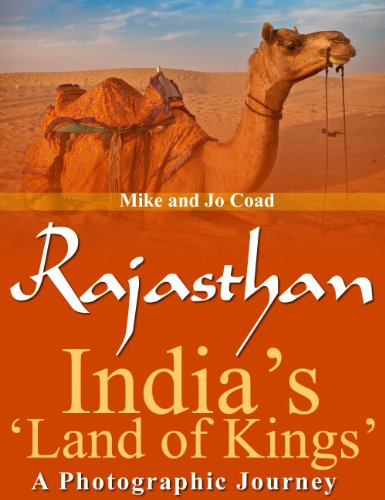
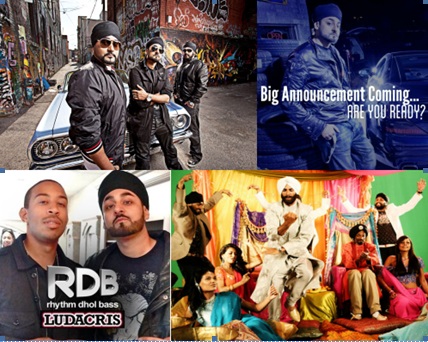
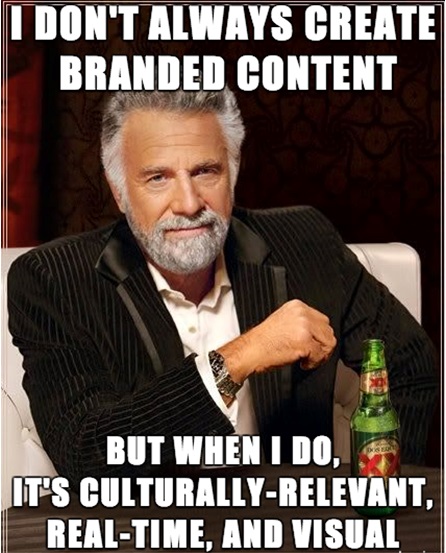


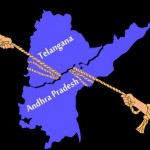




Excellent article, Andhrites have to remind themselves of their glorious history, empire building, literature, music, prosperous past and be confident about their destiny. Andhrites suffer from more inferiority complex compared to an average Indian
Thank you for your generous compliments, Krishnarjun garu. Very high praise coming from you, sir. We agree. This inferiority complex and cultural drift is due to lack of awareness of Andhra’s cultural heritage and history. Once our people start learning it, they will appreciate their own culture and be proud of who they are and where they come from.
As for your point on twitter, yes, we agree that marketing a culture sounds unseemly given the esteem that we hold our samskruthi in. At the same time, as I’m sure your wonderful Dharmanomics article would align with, globalization has commoditized culture.Thus we have to respond so that ours stays relevant.
By prioritizing high culture, the upper/middle classes preserve the high culture, while the middle/masses are happy that Andhra/Telugu celebrated in Pop culture. Balance between High Culture and Pop Culture, should, in our view at least, ensure the preservation of our Andhra Samskruthi. In the process, this will strengthen Indic civilization as a whole and preserve Dharma.
Sir,
An excellent article to revitalize Telugu confidence, I like the way you described in terms of push pull marketing strategies. Unless one really knows one’s strengths and weaknesses, one cannot either appreciate it or try to conquer the limitations, this is also true about culture and civilization.
Civilization mimics or organism, it is healthy when all the parts are healthy. we Andhras are an integral part of the megaculture – Bharata. It is important that we as Andhras or Telugu speaking people make it a jewel, bring back the glory of Vijayanagara/Satavahana Kingdoms.
But I beg to differ with push model. Push model goes against Bharatiya Samskritic grain, even though Tamils, Bengalis etc ardently show it. Push model is not Indic in character, Push model is a ego-centric model which is strives to impose culture on others because we take “pride” in it. If one looks at Dharmic Samskritis, they are not push models, else we would have waged wars on our neighbours. Dharmic Samskritis are pull models, I think Andhras need not ape any other fellows Bharatiya just because they take pride in their Language and Samskriti.
I would advocate Andhras need to inculcate a pull model, in that, each andhra becomes a flower, he/she does his/her duty to his/her Andhra matrubhumi with great dedication in his/her own capacity and let the quality of work permeate all by itself and let Bharata know Andhras because of what exceptional people they are rather than let pride “push” our Samskriti on others because we take pride in it. I feel pull model is also a Christian/western concept. A flower never pushes it’s fragrance, but it attracts others to it’s fragrance and beauty, it even plays a part in propagation of life, and then silently dies into oblivion. Let us Andhras follow that model.
We work and make our Samskriti a glowing jewel only to be copied and envied but never to be imposed or pushed on to others, like a flow with nectar, let the bees come to it “pulled” by it’s own inherent beauty.
JMT.
A small correction, I mean to say push model is Christian/Western concept, not pull model. And also I apologize for the typos and grammatical mistakes, I didn’t proof read it once done.
No need to apologize, Prajnatara. And great comment–was the work of a scholar and a poet!
I see your point about Push marketing, which is why I mentioned its upshots. I think push marketing will only be useful for Telugus/Andhraites insofar as making sure people don’t just call us South Indians without giving us the courtesy of acknowledging our individual state(s)’ identity. Thus, push marketing should only be used to reassert our distinctiveness, rather than impose a message.
You’re right, our cultural accomplishments alone should be able to speak for themselves. That is, as you say, the Dharmic Civilizational way.
What were your thoughts on the three motifs we identified for Andhras (i.e. diamond, etc)?
Sir,
Even though motifs do have their significance in defining an identity, over time, these identities might perish. Civilization too has a lifespan, it is born, it dies. The length and quality is decided by what we the people of that civilization do to assert their identity.
All the bells and whistles that announce our presence soon will be silenced by time. A civilization if it has to live after it perishes, it has to grow over these corporeal constraints exactly like our Vedas. The eternal nature in everything we do and see, it has to be internalized.
I feel Andhras should just work in silence, no fan fare no showing off, just work, let the weavers weave sarees like the fabled Bengal Sarees of the past which could fit into a match box. Let Telugu film makers make movies which inspire people than be know-how guide to sex. If one looks at Japanese, they work as an organism. One should attend their tea ceremonies to appreciate the attention to detail. I feel working in silence has a beauty. The quality of work transcends time. I feel that alone can be made a motif. Let Andhras be known for dedication to work in what ever they do. No fan fare, let the quality be the motif that needs no introduction.
But I do agree with Telugu language, unfortunately we feel good when it is called Italian of the east, but why is that Italian not called the Telugu of the west? I was told that Telugu has 85% Sanskrit words, and there is no language like Sanskrit in the world, if so Telugu should have been second only to Sanskrit, but it is not so. Telugu needs to have it’s rightful place. When one reads or hears the poems of Sri Potana and such legends, you will be mesmerized by how the poets use Telugu to express such complex thoughts so beautifully. I think we actually need Telugu medium schools. How many Japanese learn English?what about Chinese? The future of Telugu is bleak if Telugu is not allowed to thrive, unless it is not encouraged in schools, you wont get poets and thinkers.
JMT.
Japan: Has a huge Buddha’s statue, how many know about it? do they advertise? on the other hand, many Indians know Japanese are very hard working people, thier goods are highly valued for their quality, they have a simple life, interestingly, Japanese and Telugu share similarities, in Japanese and Telugu words end in vowels, but may be the similarities end their.
Internalizing quality takes time, but if one wants civilization to be remembered that transcends time, it is this, quality as spirit of what ever we Andhras do. When I was in undergrad school, people would identify Telugus by 3 things: gold chains on the person, bike and a girl on the the bike clinging to him, I was asked how much money I paid to get to into the school. So we have a huge differential to fill.
You just proved my point. If people only know others by what they read in the news/see in movies, then people would perceive Indians as…oh wait…
The point is that because there has been negative push marketing against (Seema)Andhras by parties like the TRS or Bollywood for that matter; positive push marketing is required to compensate.
Remember, if you want people to work to make the culture impressive (like the Japanese in your example) then young people have to participate and be inspired. The Japanese did (or at least used to do that)–Shinzo Abe is trying again. Similarly, if we don’t do at least a little bit of “push” marketing with our youth, you won’t have enough people for a natural “pull” marketing effect.
For the culture to be revitalized, you need at least a little push marketing so that young people see that the culture is worth working for. Also, the major problem Indians have is lack of strategic thinking and seriousness. They just expect circumstances to magically change by working hard–or talking (as I will touch on today). But you can have the manliest soldiers and largest armies–it doesn’t matter if you don’t think strategically. That was the lesson of the last thousand years (with rare exception, i.e. Shivaji).
It is a very interesting article. The main thing, as you point out, is that Telugu is being subsumed in the wider `south Indian’ culture. But the problem, where Tamils are seen as the standard bearers of `south India’ is one of history rather than anything else. From the days of the Nizam, and a dozen smaller Indian states in Rayalseema, upto 1956, Telugu culture has never had a unified focus. Only from 1956 to 2014 did a unified Telugu cultural motif exist. Now, again, we have a Telangana that is looking elsewhere for inspiration, specifically to find a way to define itself as something other than Telugu. Consequently, it has always been a lack of focus. We need to find a few focal points, and put our efforts behind those points.
Hello AnamikaBharatiya–thank you for your comment and compliment.
I will have to respectfully disagree. Telugu culture certainly had unified focus under the Kakatiyas. http://andhraportal.org/history/#Medieval
Furthermore, there certainly was a critical mass under Vijayanagara–which was the golden age of Telugu culture/literature.
If mere political unity/focal point is the marker, then, while Vijayanagara was just shy of complete conquest of united Andhra (under KDR), the Nizam, Kakatiyas, and above all Satavahanas had accomplished this. Even the Telugu organizations in the Nizam’s Hyderabad state were called “Andhra Mahasabhas”.
If patronage is the marker, then we see not only Vijayanagara, but also the Eastern Chalukyas (aka Vengi Chalukyas). In fact, the earliest Telugu literary patronage that we have evidence of dates back to, ironically, a Kannada dynasty over a thousand years ago. So the Telugu/Andhra cultural motif is far more ancient than the States Reorganization Act of 1956.
While no one argues with the cultural accomplishment of the Tamils, to say they have always been the cultural standard-bearers of the South, is also not quite accurate either. Certainly the Kannadigas under the Chalukyas, Rashtrakutas, and Vijayanagara had their day in the Sun. Andhra had the same under the Satavahanas and Vijayanagara (arguably a condominium of Telugus & Kannadigas).
All in all, I think this is the reason the history is so important–and why it was manipulated to make the case for Telangana, and a host of other political realities.
I do, however, agree, that to rebuild the Andhra brand, a few focal points do have to be selected. If you try to be everything, you will end up being nothing. So we have to choose carefully (as we attempted to do above) and communicate coherently. http://andhraportal.org/on-the-importance-of-history/
Sir,
In your latest article you laid out why we aee not doers. Please contrast to Japanese, they are nationalistic. They live as an organism, all for ine, one for all. They just do it. Now if you have ackowledged that we are just talkers, push model will prove we are empty vessels, make lot of noise but empty inside, more like “lona lotaram, paina patara”, end result is we make laughing stock of ourselves.
What push model was used by Ramana Maharishi that the world knew about him? What about Adi-Sankara? If we assume nation building is like developing and building a “collective organism”, push model only will make one look arrogant, exactly like the US now. Doing work in silence, excelling, and showing the world how it is done will immortalize you, you will be an example to follow.
JMT
My point was beautifully summarized by Buddha:
“Meditate. Live purely. Be quiet. Do your work with mastery. Like the moon, come out from behind the clouds ! Shine.” – Buddha
No push model. No announcement that one has “arrived”. If one has really arrived, it will be known no advertisement necessary.
JMT
Regarding Telangana:
Telangana I am afraid is a politically created, hence an artificial construct, I wish it was constructed on real issues. Real issues even they do exist, the intention of present state is a product of politics as is evident, and it appears in the name of identity, they are looking at wrong history and befriending wrong people. Didn’t you here this before somewhere? Pakistan!
History repeats itself, it only proves that Pakistan experience has taught us nothing.
JMT
Prajnatara, push marketing doesn’t preclude “brand equity” building.
As you see in the article, we emphasized that Andhra culture must be revitalized and we discussed ways in doing so. Punjabis also do push marketing–they are probably the best at it (his punjabiness is one of the first things your punjabi friend will tell you). But they also have done a tremendous job of mining their existing equity and revitalizing it (i.e. Bhangra). So the latent confidence in culture due to parental push marketing, resulted in equity building, which in turn redoubled the pull marketing.
Neither Ramana Maharishi nor Adi Sankara had to face the forces of globalization directly. So there has to be a recognition that the environment has changed. http://www.theguardian.com/commentisfree/2013/jun/07/france-culture-war-united-states
As you may have seen in the Talkers not Doers article, we purposefully ended with Rajiv Malhotra gaaru. This is because he understands that it’s not enough to simply preserve the past (he was also a marketer too–and is a Punjabi to top it off). There has to be a strategic response, otherwise cultural equity like Yoga will be digested. Push marketing campaigns like “Take Back Yoga”–helped ensure Hinduism was properly credited.
So if you haven’t, please watch that video and understand why it’s not enough to simply be “bees making honey”. If an ant is running a smear campaign saying “bee’s honey isn’t good”–you have to respond. It’s the same in a political election. Whether it’s American or Indian politics, politicians have to respond to negative marketing/campaigning by the other side. When we’re in an environment where culture is a commodity, a marketing response is required. But as I said, this doesn’t preclude working hard like the Japanese. Push and Pull marketing are not either/or propositions.
Also, here’s why the Japanese may not be the model for managing cultural branding: http://content.time.com/time/world/article/0,8599,2054380,00.html
—
As for Telangana, again you, have proved my point for me, Prajnatara.
KCR’s negative push marketing job on (seema) “Andhras” is what created the bad blood that set the stage for bifurcation. By your “Buddha” theory, no “push marketing” response was needed by Seemandhras. But you need to remember that the Buddha was a philosopher, not a politician/general. The same restraint showed by Ajatashatru wouldn’t be shown by a kcr or razakar for that matter.
Thanks for your comment. Do watch the video in the new article and then respond in that article if you are still unsure. It should answer your questions.